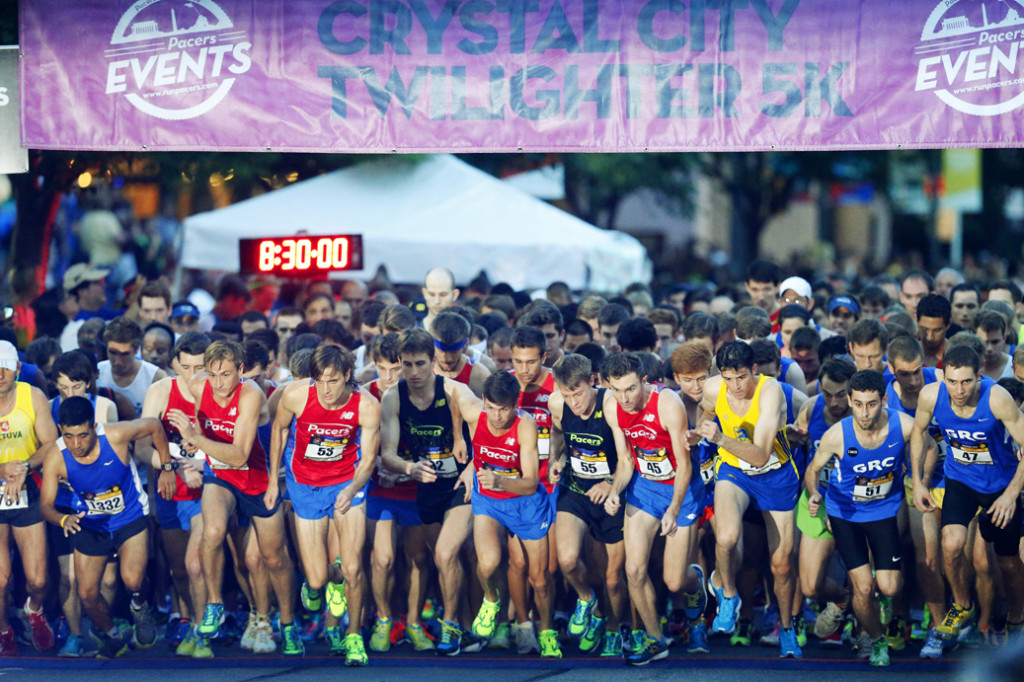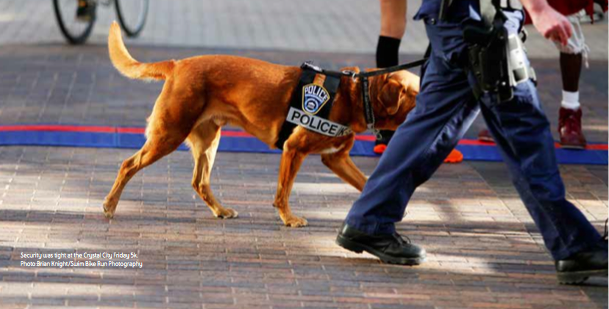The Crystal City Twilighter 5k‘s seventh running was a who’s who of the regional running scene.
Area running clubs emptied their stables. The course was new – faster, with fewer turns. And conditions, while not good for racing, exactly, were about as good as they get for late July in downtown Arlington. No 98 degrees (2011) or downpours (2013).
[button-red url=”http://www.zippyraceresults.com/search.php?ID=4127″ target=”_self” position=”left”] 5k Results [/button-red]All told, 28 men broke 16 minutes, with Chris Kwiatkowski, RunWashington’s top-ranked runner in 2013, breaking the tape in 14:37. Kwiatkowski, 25, also led his Pacers/New Balance team to victory in the co-ed club team competition, a squad that included women’s winner Kerri Gallagher, who came through in 17:22. (In the women’s race, by the way, the top 23 broke 20 minutes, with 11 going under 19.)
“It’s a great atmosphere,” Kwiatkowski, who ran close-to-even 4:40 miles, said. “This was my first time doing this. I have been a part of this for four years – coming to watch, helping out – but never to race. So it was an excellent day to come out and compete and have some fun.”
Kwiatkowski was followed by Pacers-New Balance teammates Landon Peacock (14:47), Leoule Degfae (14:50), and Frank Devar (14:51). Kevin McNab, in 14:55, was the fifth and final runner under 15 minutes, leading Georgetown Running Club to second in the team standings. GRC was followed by DC Road Runners Club, Northern Virginia Running Club, and Capital Area Runners.
Last year, Claire Hallissey led Gallagher through a too-quick first mile. Gallagher faded to third, she recalled.
This year she had a very different strategy. “The plan,” Gallagher’s roommate and training partner, Amy Laskowske, said, “was that she could help me through the first mile. And then I kept telling her to go, and she wouldn’t go.”
At the three-mile mark, Gallagher finally gave in, while Laskowske still finished just three seconds back. Lindsay O’Brien, of Georgetown Running Club, was third in 17:56.
“It was really good to kind of go in with a better plan and be a little more conservative,” Gallagher said.
Kwiatkowski and Gallagher each earned $200 for their efforts. The top three teams each received $250.
In the masters division, Patrick Kuhlmann, 43, won in 16:12. Shannon Smith, 48, was top female master in 21:20.
“I’m the old guy,” the unassuming Kuhlmann, said, as a way of identifying himself at the award’s stage. He took the same honor last weekend at the Rockville Twilight.
***
If you think racing in the summer can be tough, try two in one day. That’s what Mike Cannon, 56, of Fairfax Station, did as part of his quest to run more than 100 races in 2014.
Asked how his race went, Cannon said, “I ran a 5k up in Baltimore this morning so I didn’t have the legs for it.”
Andrew Gray and Alan Bornbusch, two Arlington runners and members of one of Pacers’ Tuesday night running groups, enjoyed the race, they said, though perhaps for slightly different reasons.
Bornbusch, 53, said his 22:39 finish served him well in training for his first half marathon this fall.
“It’s a nice little piece of speed work,” he said.
For Gray, 31, who came in just a few seconds shy of breaking 20 minutes, the race was more like a piece of cake, even if a head cold made it difficult.
“It’s a good way to spend my birthday,” he said. “That way I can make room for brunch tomorrow.”
***
He finally had it.
After years of trying, Arlington’s Matt Deters broke 16 minutes by a clump of hairs – 15:58. He confirmed his time at a laptop at the registration table.
“When I was in high school, if you ran under 16 you were a god,” he said. “I didn’t think I’d be able to do it, after a torn Achilles and knee surgery.”
He was close on the fourth of July, running 16:06 at the Firecracker 5k in Reston.
At Crystal City, he split 4:49 and 10:03 before hanging on as the heat, and the hurt, turned up.
***
Look out for Thomas Edison High School’s cross country team.
The Edison Club won its second-straight title in the high school team competition. Gonzaga, Annandale, Wilson, and J.E.B. Stuart also fielded clubs.
The Walt Whitman Club won in the high school girls division, followed by Annandale, Lake Braddock, Wilson, and Georgetown Visitation.
Brandon Rockers, a rising senior at Edison who was third for his club in 17:47, said running the Crystal City Twilighter has become a team tradition. “The race has always been before a running camp” members of the team attend, Rockers said.
In the high school results, Aviad Gebrehiwot, 17, of Annandale High School, was top male in 16:44. Sonya Butseva, 16, and teammate Kate Murphy, 14, both running for Lake Braddock Club, were the top females, both finishing in 20:49.
Look out, as well, in the 11 to 14 age group.
Madalyn Wright, 11, was 3rd in the female division behind Murphy and Angelica Gaughran, also 14. Her time was 22:57.
Wright was wearing a tutu, and said she has now run about half-a-dozen races between 5k and 10k.
“I love running,” said Madalyn, whose mother, Myra Wright, ran in high school and is a longtime runner.
Madalyn was 6 when she ran her first race. “I kept saying,” Myra Wright recalled, as they ran together that first time, “the tortoise wins: slow and steady finishes the race. And she kept saying, ‘Mom, I want to go faster.’ So at two and a half I said, ‘Madalyn, ‘Go!’ and she just took off.’
That’s how it has been ever since, said Wright, who had a finishing time of 24:16 on her watch.
“I tell you, it motivates me to run faster when you know your little girl is up there.”
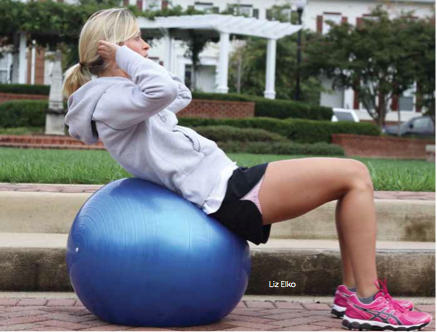
Everything is supposed to hurt during a marathon.
Right?
That’s what Kate Volzer told herself in Philadelphia. Her legs were tired, back was sore, hip ached, but it all seemed like a temporary price to pay for the race she was running, the race of her life.
“My hip had been hurting for a month, but given the mileage I was running, it made sense something would be nagging,” she said.
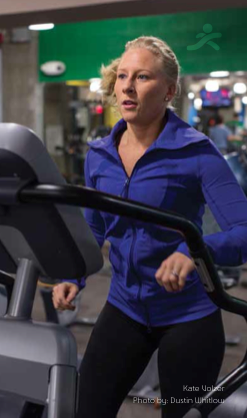
All of those miles paid off — she brought a 2:53 home to Arlington and enjoyed a few days off before she rejoined her GRC Racing teammates and Potomac Runners. But when she headed out the door to run again, she greeted a pain far worse than she had felt in the city of brotherly love.
Her physical therapist assured her it was a hamstring injury, at worst a tear, and it would heal with rest. A few doctors said that. For months, she followed the frustrating cycle of testing and resting, finding herself an unwitting initiate of a large distance running fraternity. The injured. Delta-Ow-Docta.
It starts with change. Something more than the body is ready to handle. Too much new mileage, too many work- outs, trusting too blindly in faddy running shoes. The averages say it’s going to catch up with everyone eventually, everyone who pushes themselves to get faster. Sometimes a mild injury in one place can cause a form change that has musculoskeletal repercussions, like the plantar fascitis that help fell the erstwhile indestructible Michael Wardian.
He was absent from race results for the first time in more than 10 years in 2012. After thousands upon thousands of miles, his body didn’t have an answer, and in August he was sidelined with five pelvic stress fractures. “The longest I’ve ever taken off was a day here or there when I’m traveling,” he said. “It feels like something’s missing.“
Perhaps it’s the 110 miles a week, or the ability to run the Houston Marathon the morning after competing in the U.S. Olympic Marathon Trials since he was already in town.
He attributes some of his injury to lack of sleep, because he and his wife take turns watching their son, Grant, who has recently suffered from seizures, which are under control now. With more rest and recovery, he hopes to be running in late October or early November. Though he targets the Kansas City North Face Endurance Challenge, he’ll be happy to race the local Kinhaven 5k, which benefits his sons’ school.
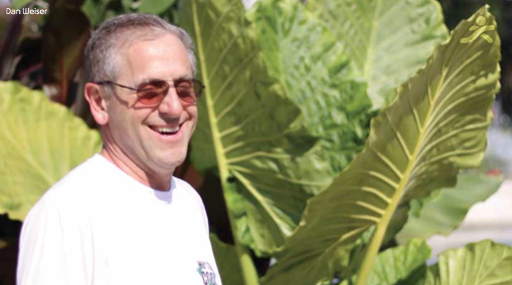
In the meantime, he bikes, including a one-day trip down Skyline Drive, to keep himself in shape. He’s not exactly sitting on the couch watching television.
“Now I feel like I’m a real runner,” he said. “Everyone else I know has dealt with an injury. I’m putting my time in. This is a blip on the radar.”
“Every time I’d go out for a run, I’d cross my fingers and say ‘please don’t hurt, please don’t hurt…’”
Doctors advised Volzer to find a new sport, take a corti- sone shot or elect for surgery, but it was too early for her to go under the knife. She took total rest for a few weeks and gave it another shot.
No dice. This time, her right hip joined in.
Her doctor suggested the body’s symmetry was too uncanny to ignore. Further testing confirmed that her right labrum was also torn.
“I had already made the decision to go with surgery on the left hip, so by this point I figured I might as well take care of everything, rather than start up again and be forced to rehabilitate all over again.”
So she was sliced up twice in August — left, then right, for each labrum to be repaired and irritating bone to be shaved down. She’s looking at a late November return to running. In the meantime, though, she faces some existential questions.
“When you are at a certain level of running and then you can’t run due to injury, you tend to feel like you are no longer an elite runner because you aren’t technically running,” she said. “So if you aren’t the elite runner that you were and so badly want to be again, who are you? Who am I when I am injured? Am I still a runner?”
Liz Greenlaw’s body has given her almost two years’ worth of reasons to stop running.
Riding high on a string of great races in early 2011, she was looking ahead to that fall’s Marine Corps Marathon. A stress fracture took her out, and she discovered she, like Volzer, had torn a labrum and would need surgery. She recovered from her fall 2011 procedure and gingerly ran again in the spring, gaining confidence in fun races, running under a family alias. She was primed for Marine Corps, and her fitness was coming along, until she felt her pelvis shift during a Capital Area Runners workout. She took time off and tried again to run for an hour in August. Afterward she knew she had to beg down to the 10k. Now, with another stress fracture diagnosed, she can just wait and start over.
But she will start over. She saw the course toward her potential with some great races and knew that wasn’t “it.” “I have total confidence I can get back to that,” she said. “There’s more running for me to do.”
She keeps her age group award from the 2009 Marine Corps race framed above her bedroom door so she sees a reminder of better times whenever she walks out
“I remember how it felt to run healthy. I miss the adrenaline. I replay old races in my head, tough, challenging ones that ended up to be rewarding.”
When Keith Kauffman works with injured runners, he keeps them focused on the present.
“There’s a temptation to get caught in the past or the future,” he said. “The regret, the what ifs. Athletes aren’t the best at staying patient.”
He’s a sports psychologist with offices in Alexandria and Washington who also works with Catholic University’s sport psychology research lab.“Confidence is a tenuous thing when your body fails you,” he said. “There’s the fear of re-injury, concerns about lost fitness and the motivation to try and do too much when they get back.”
He said many injured runners show depressive symptoms, in part because of their separation from their ex- ercise outlet, but more because they are missing out on what they enjoy, which includes social time for many. As a result, injuries can be harder on high school athletes. “Their teams are often their primary social group,” Kaufman said. “Injured time is time away from their friends and less attention from their coach.”
College student-athletes carry the added complication of losing a scholarship when mental burnout and extended injury lead them to walk away. Post-collegiate runners, though, face different concerns, especially as they age.
“I think knowing and being able to accept when a window has closed are potentially huge challenges for athletes, particularly when their identities have long been tied to their sport,” he said. “This is why an injury that is career-threatening could be so devastating,” because they have to face the limitations that their body puts on them. “They may be left with an unsettling feeling of, ‘what now?’”
Runners aren’t doomed to lives of injury and frustration, though. Through all the discipline and routine rehab, there’s some hope. Dan Weiser took his first significant run in five months on Sept. 23, 2012. His poorly-aligned kneecaps deteriorated to the point where running was out of the question and climbing stairs or even hopping over curbs was a problem. He didn’t deal with a draconian physician, though.
“My surgeon (John Klimkiewicz) never says ‘don’t run,’ but always works with me to find ways to keep active,” he said.
Weiser races a range of distances from 400 meters to 50k. Variety is not as enticing if he isn’t wearing the rubber off of his shoes.
“Weights, stretching and swimming don’t do it for me,” he said, noting that biking also hurts his knees. “I miss the camaraderie of other runners.”
As a coordinator for DC Capital Striders’ evening Mall runs, he remains at the center of activity for the popular group runs. Now, he’s on his way back.
His physical therapist, Alan Brodnick, had him try alternating walking and light running for a minute at at a time. He increased it slowly, held back when necessary.
“I felt great and wanted to keep running, especially as other runners passed me,” he said. “I wanted to end the run feeling great, not in any pain, so that was my motivation for staying at five minutes.”
Lindsay Wilkins couldn’t do any cross training when she was hurt. In spring 2009, she tripped and tore the ham- string away from her right “sit bone.” It wasn’t something doctors normally saw in runners; rather, it was more of a hockey or water skiing injury. For six weeks, she was trapped in a hip cast. She could stand and lie down. No sitting. And certainly no Pacers racing team workouts. Traveling meant lying in her hatchback as her husband Brian drove her to doctor’s appointments.
“It was a very difficult adjustment, but that surgery was the only way I’d be able to run competitively again,” she said. Removing the cast at the end of six weeks was liberating, but the atrophy in her leg forced her to re-learn how to walk. Her subsequent stab at running was gradual.
“It was like I had never run a step in my life,” she said. After more than a year, she felt something click. Unlike the well-documented fracturing of a bone or snap of a tendon, instead she felt like a runner again, the kind who was once 10 seconds away from winning a marathon two years prior. She was back, and it was time to see what “back” meant.
Her shot at the 2011 Chicago Marathon said it all. On a day much warmer than her 2008 Marine Corps runner up, she finished a mere minute off of her PR.
The whole process made her much more mentally tough.
“Feeling bad in a race is nothing compared to the misery of not being able to run,” she said.
Volzer has been careful in the weeks following surgery. She’s taking her rehab seriously and her cross training lightly.“My personality is a little pessimistic,” she said. “I’m always worrying about worst-case scenarios, and I’ve wondered at times what I will do if I start running again and the surgeries didn’t fix anything.”
She said even as the months piled on without an answer, she never gave up on running.
“I never lost hope, I got upset when I had a setback, but I never thought I wouldn’t be running again someday.” While she is waiting to resume her old life, Volzer can go to happy hours and meet up with friends after work instead of hitting the track. But that doesn’t mean it’s not on her mind. Or that she doesn’t miss her GRC racing team and Potomac Runners training partners.
“I daydream about when I run again, all the time,” she said. “I don’t care how slow I’ll be, I know I’ll be smiling the whole time.”
Not bad for a self-described pessimist.
This article originally appeared in the November/December 2012 issue of RunWashington.
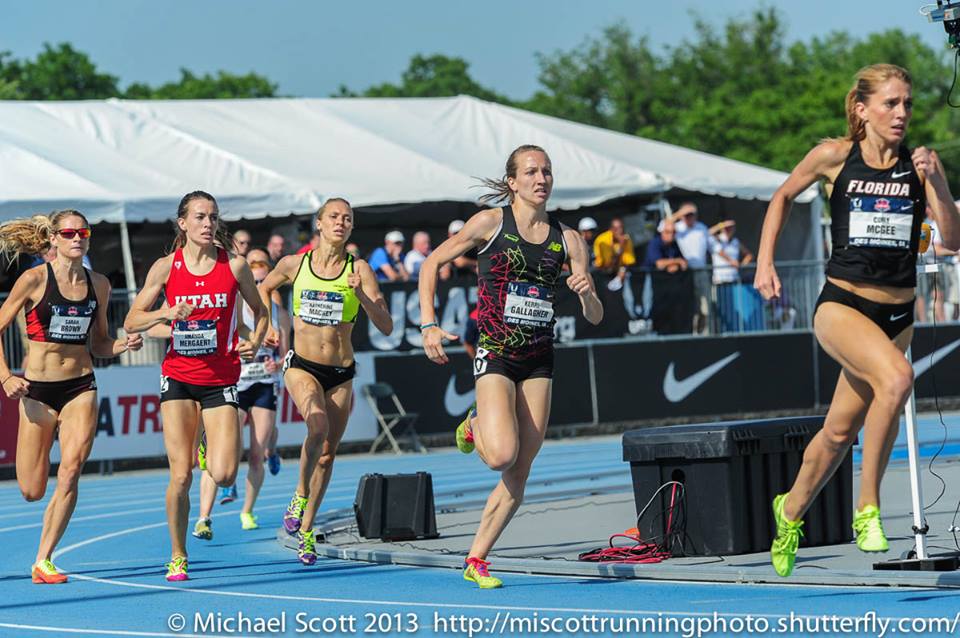
comes down to the last 100 meters. Photo by: Mike Scott
[button-red url=”http://www.usatf.org/events/2013/USAOutdoorTFChampionships/results/track.aspx?EN=10&RN=2″ target=”_self” position=”left”] Results [/button-red][button-red url=”http://www.youtube.com/watch?v=lhtFfdJyPgg” target=”_self” position=”left”] Watch the Race [/button-red][button-red url=”http://mydigimag.rrd.com/publication/?i=154152&p=64″ target=”_self” position=”left”] More Info [/button-red]
Kerri Gallagher wanted to stay relaxed during her race, and as it turned out, that wasn’t too hard.
The finals of the 1500 meter run at the USA Track and Field Championships went out at a crawl- 84 seconds for 400 meters and 2:40 for 800. Having run a personal record 4:12.58 two days earlier to qualify for the final, this felt more like an aggressive warmup to Gallagher, who lives in Chevy Chase, Md.
On a hot day in Des Moines, Iowa at Drake Stadium, the Pacers/New Balance runner didn’t feel the temperature in the mid-90s was getting to her. She had raced on plenty of hot tracks as an undergrad at Fordham University, but never this kind of hot field, which included 2011 Diamond League champion Morgan Uceny, among others. Seven finalists had run more than four seconds faster this year than Gallagher had during her career.
“Nobody wanted to take the lead,” Gallagher said afterward. “I’ve been in tactical races before and knew it would play to my strengths.”
She would stay out of trouble and be ready to react, and she did just that, in the back of the pack. That is, until the bell lap approached. With a little more than 400 meters to go, she swung wide outside — in last place at that point — to move around and be ready for the long kick.
“Coach (Matt Centrowitz) told me I should make a gradual move, but the circumstance wasn’t really right,” she said. “I had to put myself in a position to compete, so that plan went out the window.”
At the right time, too, because the whole 12-woman field was moving when the bell run.
“She was better than a New York City cab,” Centrowitz remarked.
With 200 meters to go, the top five were pretty well shaken out- high school phenom Mary Cain trying to hold off 2004 Georgetown alumna Treniere Moser, with NCAA Championships runner-up Cory McGee in third and former world championships bronze medalist Shannon Rowbury in fourth, with Gallagher close behind. The only change over the last half of the lap was Moser edging out Cain for the win and her fourth U.S Outdoor title in 4:28.62. Two second back, Gallagher held her position to take fifth in 4:30.56.
“Coming into the meet, coach said I could probably finish between second and tenth, given how good the field was,” Gallagher said. “I would have been happy with top six, but just making the final was amazing.”
She hit the national qualifying mark with a 4:12:97 in Los Angeles at the Oxy High Performance Meet in May, then notched an 800 meter PR of 2:06.4 in New Jersey.
The door’s still open on the rest of the season for Gallagher. She serves as an assistant track coach at American University.
The usual plan for the George Washington Parkway Classic calls for securing a 10-mile, point-to-point course that starts at Mount Vernon, proceeds along George Washington Memorial Parkway, and finishes in Alexandria – a short walk away from Oronoco Bay Park. This means, on one hand, that some sort of barrier must stand between every driver and every possible opportunity to unknowingly or knowingly enter the race course. On the other, it means that course marshals and police officers must be ready to stand by and enforce these barriers; and, should the unthinkable happen – a vehicle on the course – the plan includes being ready for that, too.
There is the job of safely transporting 6,000-or-so runners from an area near the finish – where many park – to the start. There is the readiness for any on-course injuries. There are risk management strategies. And yes, there is water, and sports drinks, and gel packs, and clocks at mile markers.
That’s not it – not even close. But two more things: The Alexandria Police Department, for this year’s race, wanted to honor a colleague who was seriously injured in a shooting, and, on a related note, make the last mile special for participants.
Twenty-five year force member Sgt. Joseph Seskey and the members of his special events unit envisioned – with about a mile to go – a line of police officers there to greet the runners, many of whom wore honorary bibs for Officer Peter Laboy, the man injured, on their backs. “So you turn that corner,” Seskey said, “and it kind of grabs you: everyone coming together to support Peter.”
Six days before the Parkway Classic, tragedy struck the Boston Marathon.
An hour later, Seskey was on the phone with Kathy Dalby, founder of Pacers Events, which organizes the race.
The officers scheduled to stand strong for Peter Laboy were reassigned to other race day duties. Contingency planning for “enhanced security,” years in the making, quickly took shape.
“We knew we had to make some changes,” Seskey said, “and be out in front. Within an hour from Boston … everybody was thinking alike. We all just knew what we needed to do.”
In addition to Alexandria police and Pacers Events, “everyone” included U.S. National Park Police, whose jurisdiction covers better than three quarters of the course, fire and rescue units, and additional local and federal agencies whose services were suddenly in high demand.
Sanitation was called in to cover trash cans. Emergency management, intelligence, and special operations performed unseen jobs. The finish area was closed off to spectators, a mobile command center situated nearby.
Staffing was increased for specific locations, Seskey said. Extra bomb-sniffing dogs were present. Snipers manned rooftops, while extra police teams observed the crowd.
“We have always understood that any place that a lot of people assemble could be a possible target,” said Seskey, whose team is handling safety and threat assessments plans for an ever-increasing number of road races. “You just have to always be prepared. We kind of operate on that level without even knowing it, just because we have been doing it for so long.”
The Game Changer
What if there is a huge thunderstorm, or a gas leak, or an attack? How would you re-route or cancel the race? What’s the evacuation plan?
When police, fire departments, emergency services, and race organizers meet at the planning table months before an event, all these scenarios are on the table, Dalby said.
Twenty years ago, Marine Corps Marathon Race Director Rick Nealis remembers one thing that weighed heavily on many race directors’ minds was whether to put four or six ounces in the Dixie cups Marines would hold out for runners.
September 11 was a “game changer,” he said, explaining the increasing emphasis placed on safety and security rather than water, Vaseline, and bananas.
As if September 11 wasn’t enough, the D.C. sniper shooting occurred the follow October. The next year, America entered a second war, making MCM a potentially more inviting target, Nealis said.
There was a time when MCM runners could park in the Pentagon parking lot, a time when race day logistics didn’t include security checkpoints. There was also a time when the race didn’t sell out in less than three hours.
While you run MCM – through seven police jurisdictions – emergency crews are on standby, security alerts are taken and processed, police officers stand guard over barricades.
Some situations require quick decisions. During last year’s MCM 10K, which is held during the marathon, debris left over from the Army Ten-Miler, Nealis said, blew onto the course and looked like a suspicious package. The race was stopped until authorities could inspect it.
Afterward, while you analyze every last detail about your performance, so do organizers and their security partners.
“Each year,” Nealis said, “you sit back and you say, well, we could do this better.”
Enhanced Security
Jean Arthur remembers how quickly one driver’s irritation turned to rage.
She was standing beyond the sidelines of a local road race, a volunteer course marshal. The road was closed for the race, Arthur explained to the driver. The only option was to turn around.
The driver started yelling. A police officer, who heard the yelling, approached the car, and suddenly the driver seemed to have no problem at all.
Arthur is now the race director for the Pikes Peek 10k, a point- to-point, super-fast race, held this year on the same day as the Parkway Classic.
She took over the job in 2007. By now, she knows all of the police officers she works with on a first name basis.
For Pikes Peek she works with several police departments and two fire departments.
The traffic control plan is 50 pages long. And in the early morning, as a race truck heads out on the course to lay down cones, a police car follows with flashing lights.
Going back to her experience, Arthur has learned that police bring more than manpower to an event, but also a sense of legitimacy. Drivers encountering a truck going really slow on Route 355 in the early morning sometimes become annoyed, and having a police officer at her side provides “general protection.”
After she heard about the attack in Boston, Arthur contacted her event partners right away.
“Hey, Jean,” one police officer wrote her in a text message. “I got you covered. We’ll take care of you.”
Bomb sniffing dogs were at the start and finish of this year’s race, sniffing vehicles, bags, and portable toilets. An extra police officer roamed the course on a motorcycle.
Police officers at Pikes Peek, once on-course assignments are complete, typically report to their next assignment, but this year all of them provided extra security at the post-race festival.
“I think from here on out we have to take these extra precautions,” Arthur said.
Even so, how much will really change?
When you run a race in the District starting in front of Freedom Plaza, you probably aren’t thinking – are you even aware? – of the hundreds of cameras watching you, of “mass casualty” pre-planning, or reports of a suspicious car near the course.
Enhanced security, much like regular security, is both seen and unseen. So as race organizers and police officers, post-Boston, re-evaluate these plans, now is a good time to recognize how much safety and security infrastructure is already in place. This is the time to recognize all the planning that goes into closing roads so we can race in the middle of them, and the already essential role of police and fire crews and medical staff and emergency response units in allowing us to celebrate our sport.
The Parkway Classic was U.S Park Police Sgt. Ari Wong’s first race as head of the force’s special events unit.
“Coming into this job,” Wong said, “you really don’t have as much appreciation for what goes into it.”
For big races like the Parkway Classic, the planning begins many months in advance. Thus, by race day, every assigned officer’s task should be clear. “I do my job well,” Wong said, “if I don’t have very much to do on race day.”
Given the sheer volume of road races in the area, the job, Wong said, comes with its fair share of super-early weekend mornings.
But Wong, and Seskey both said they enjoy the work, and working with each other, on races that cover both police forces’ jurisdictions.
“There’s no lead agency,” Wong said. “We work together from day one.”
He added: “For all of us in law enforcement, the people running are our neighbors, our friends, our colleagues’ husbands and wives. We want it to be a special event for them. We want it to be safe.


